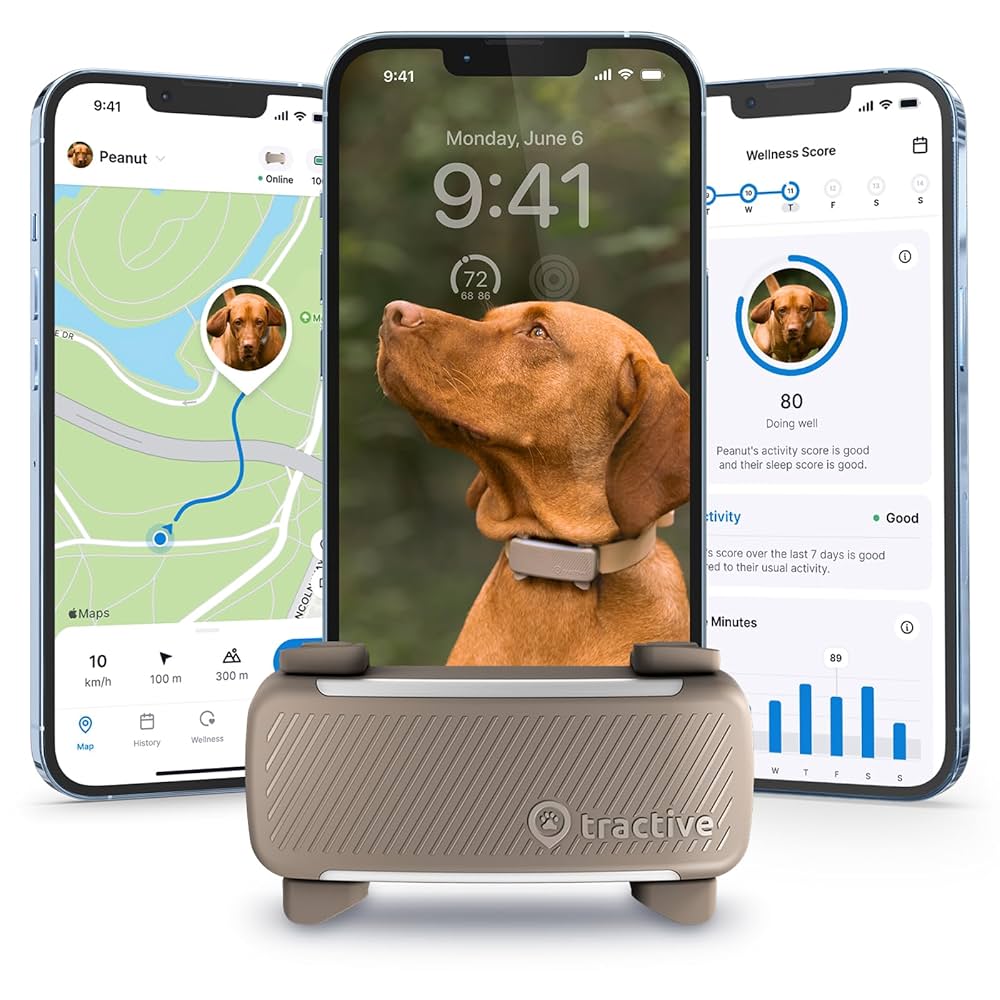Dog Smart Tracker Training is becoming an essential skill for modern pet owners. With GPS collars and health-monitoring devices growing in popularity, ensuring your dog accepts this new technology comfortably is key. The goal isn’t to force your dog—it’s to build positive associations through consistent, reward-based steps.

Understanding the Foundations of Dog Smart Tracker Training
The success of Dog Smart Tracker Training relies on behavioral science—mainly classical conditioning and positive reinforcement.
The Principle of Classical Conditioning
Classical conditioning changes a dog’s emotional response to new objects. Each time your dog sees or hears the tracker, pair it with treats, praise, or play. Soon, the tracker predicts something fun, not scary.
Identifying Stressors Before Training
Before you start Dog Smart Tracker Training, check for discomfort triggers. Some dogs react to the clasp sound, new scents, or the device’s weight. If your dog shows stress signals—like yawning, shaking, or walking away—pause and slow down.
3️⃣ The “Snap and Go” Technique
If your dog dislikes the collar snap sound:
-
Snap the collar near your dog → treat.
-
Touch it to the neck → treat.
-
Snap it on → give a high-value reward (e.g., frozen Kong or meal).
Remove the collar after 5 seconds to prevent buildup of stress.
This step conditions the sound and pressure to predict something positive.
4️⃣ Gradually Increase Wear Time
Never start with long sessions. Begin with 5-minute wears during fun activities (walks, playtime), then add 2–3 minutes daily. Remove it before discomfort appears—end on a positive note to build trust.
5️⃣ Normalize Tracker Use in Daily Life
Once comfort is achieved, put the tracker on before exciting events—walks, car rides, or fetch. Remove it during low-activity times. Over time, your dog will associate the Smart Tracker with joy, not stress.
Talking to Your Veterinarian About Acceptance Issues
If your dog remains fearful, consult your vet early.
Keep a Detailed Training Log
Record:
-
The step at which stress occurs
-
The type of reward used
-
Any possible physical causes (skin irritation, pain, etc.)
Ask specific questions like:
“Despite consistent Positive Reinforcement, my dog shows stress when the Smart Tracker touches their neck. Could this relate to neck pain or sensory sensitivity?”
Veterinary behaviorists can help identify medical or anxiety-based causes that make smart tracker dog training more challenging.
🔗 External Resource: American Veterinary Society of Animal Behavior (AVSAB)
Building Your Professional Support Network
Training success improves when professionals collaborate.
-
Certified Dog Trainer (CPDT-KA): To guide Positive Reinforcement methods.
-
Veterinary Behaviorist (DACVB): For dogs with fear or trauma.
-
Tracker Brand Support: For device fit and comfort optimization.
Joining online communities such as
🔗 r/DogTraining on Reddit
helps you share experiences and learn from others’ Smart Tracker adaptation journeys.
Finding Advanced Training Resources
When your dog masters the basics, continue learning:
-
Online Academies: Courses on counter-conditioning and desensitization (e.g., Karen Pryor Academy).
-
Veterinary Consultations: If your dog had trauma from past collars, seek professional behavioral support.
You can also check our related guides for step-by-step reinforcement training:
🔗 Internal Link: Advanced Clicker Training Techniques: Mastering Complex Behaviors
Frequently Asked Questions (FAQ)
Q: My dog chews the Smart Tracker. What should I do?
A: That’s a stress signal or poor fit. Return to the “Snap and Go” stage. Never leave the tracker unsupervised. Offer chew toys as distraction.
Q: How long does smart tracker dog training take?
A: For most dogs, 1–2 weeks. For anxious ones, up to a month. Consistency matters more than speed.
Q: Can I activate the Smart Tracker during training?
A: No. Treat it as a simple object until your dog is fully comfortable. Sounds or lights may restart fear conditioning.
🐶 Final Thoughts
Introducing new technology to your pet should always prioritize emotional safety. With consistent smart tracker dog training, your dog will not only tolerate but enjoy wearing the device—turning technology into trust.
Smart Trackers aren’t just tools; they’re extensions of your care and connection with your dog.